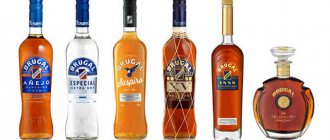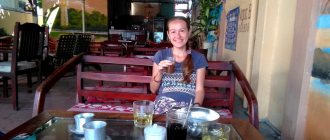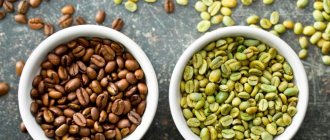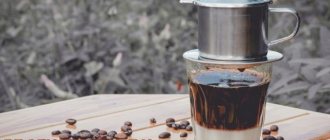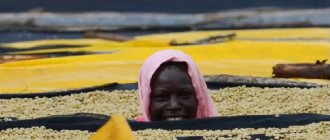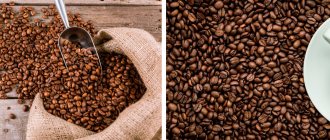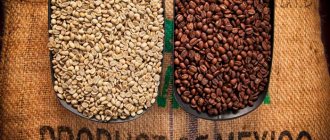Honduras neighbors countries such as Nicaragua, El Salvador and Guatemala. Local coffee is full-bodied, sweet and soft in profile. Previously, Honduran coffee was considered a second-class product and was used mainly to create blends, but recently the situation has changed for the better. If a few years ago local products were suitable mainly for home consumption and supplies to neighboring Guatemala, now the country’s government is investing in education and technology, developing infrastructure, and building roads. As a result, Honduran coffee has gained recognition in the world market.
Interesting Facts
The altitude at which the plantations are located: 1100–1650 meters above sea level.
Honduran coffee varieties: Arabica (Bourbon, Caturra, Typica, Catuai, Pacas).
Harvest: November to April. Only red, ripe fruits that have reached maximum taste and aroma are harvested.
Processing of grains: wet, dry.
Aroma: vanilla, hazelnut.
Nuances: chocolate, nuts, apricot, tropical fruits.
Body: round, medium.
Acidity: soft, balanced.
Production: Almost 6 million 60-kilogram bags of Honduran coffee were produced in 2016, 89% of which were exported.
Honduras is the largest producer of coffee beans in Central America, the 3rd producer in Latin America (after Brazil and Colombia), and the 6th producer in the world.
Features of growing coffee in Honduras
The Central American region has a climate suitable for coffee. Honduras also has its own characteristics of coffee cultivation.
- Fertile soils with the necessary set of minerals.
- The terrain is represented by highlands and hills. An altitude of 1000-2000 above sea level is excellent for growing coffee.
- Coffee trees grow mainly from the shade of banana palms.
- High humidity and plenty of rain prevent soil aridity.
- The grains are processed in a “raw” way and dried using technology.
- About 90% of the coffee industry is made up of small family farms.
Story
It is not known exactly how coffee beans came to this country, but it is believed that the Spaniards brought them from the Caribbean islands at the beginning of the 18th century. Documentary evidence states that within a hundred years, Honduran farmers were cultivating and roasting coffee, but in modest quantities, for domestic consumption. The first officially registered coffee plantations appeared at the beginning of the 19th century; over time, coffee exports confidently took second place in the country’s economy, second only to bananas, and already in the early 2000s, the contribution of these two products to the state budget was equal.
The 1990s were a difficult time for the country's coffee industry. On the one hand, production volumes increased, on the other, in 1998, a hurricane destroyed 80% of the crop, smuggling, underground trade in coffee that sharply increased in price, and speculation flourished.
Initially, coffee in Honduras was not of high quality. Neighboring countries willingly bought it for pennies in order to dilute their shipments with cheap grains and make good money on it.
Towards the 2000s, the government introduced a new tax on coffee exports (closing shop for Guatemala and other coffee giants enriching themselves at the expense of Honduras). The money received was used to develop the industry. Farmers cultivating coffee trees, on the contrary, were provided with tax benefits - this created conditions for not only quantitative, but also qualitative growth.
Today, the aromatic beans are grown primarily on small farms, and the coffee industry creates about a million jobs (two million with seasonal workers and harvesters).
Historical data
It is believed that Spanish colonists introduced coffee seedlings in the 18th century. The first mentions of coffee in Honduras appeared already in the 19th century. When is World Coffee Day celebrated?
It flourished in the 70s of the last century. Several factors contributed to this. First, disruptions in the supply of coffee from South America began to appear. An important fact is that by this time, the people of this state were tired of wars and revolutions. People began to devote more time to agriculture. This caused the coffee industry to take off, and Honduras established itself as a full-fledged coffee exporter.
In recent years, Honduras has taken a leading position and has become the largest coffee exporter in Central America.
Geographical and climatic conditions
Honduras borders the Caribbean Sea to the north and the Pacific Ocean to the south; the population of this Central American country is just over 9 million people. In the mountains the climate is more temperate; in the lowlands the weather tends to be tropical. The state has hills, valleys, coastlines and jungles - all of these areas can be used to grow coffee.
Growing regions
Population: 8,200,000
Number of bags (60 kg): 4,200,000
Although the National Coffee Institute does not list the Santa Barbara region, many roasters label Honduran coffee by this name, and several coffee regions cover this area. Some argue that this region should be considered separately, but it is best to follow the state list of regions. Santa Barbara produces excellent lots of Pacas: when properly processed, this coffee has a distinct and quite intense fruit flavor and is definitely worth trying.
Copan
It is located in the western part of Honduras on the border with Guatemala and covers the northern part of the Santa Barbara region. It got its name because of the ancient city of Copan located here, known for its ruins left over from the Mayan civilization. The location of the region is proof of how important it is to focus on where the coffee trees grow, and not just indicate the country of origin when labeling coffee. Altitude: 1000-1500 m Harvest: November - March Varieties and varieties: Bourbon, Caturra, Catuai
Montecillos
This region consists of several areas. The most significant are Marcala and La Paz. Marcala is a municipality in the department of La Paz. Roasters often use these names for greater accuracy, rather than labeling coffee by Montecillos region. Altitude: 1200-1600 m Harvest: December - April Varieties and varieties: Bourbon, Caturra, Catuai, Pacas
Agalya
Stretching across the northern part of Honduras, most of it is protected forest, so ecotourism plays an important role in the region's economy. Altitude: 1000-1400 m Harvest: December - March Varieties and varieties: Bourbon, Caturra, Tu pica
Opalaka
The southern part of Santa Barbara's coffee regions is located here, as are Intibuca and Lempira. The region is named after the Opalaka mountain range, which stretches throughout the region. Altitude: 1100-1500 m Harvest: November - February Varieties and varieties: Bourbon, Catuai, Tupisa
Comayagua
This region in west-central Honduras is covered in dense tropical forest. The city of Comayagua was once the capital of Honduras. Altitude: 1100-1500 m Harvest: December - March Varieties and varieties: Bourbon, Caturra, Tu pica
Characteristics of Honduran Coffee Beans
The taste of Honduran coffee varies from mild to sharp, and is difficult to distinguish in blends. The quality directly depends on the altitude of growth - mineral notes are clearly felt in grains from the highest mountain plantations. The best varieties are grown in the shade of other trees, and different plants are mixed on the plantation, so that the coffee absorbs the aroma of tropical fruits and flowers.
The overall profile is balanced, sweetish, with hints of vanilla. However, the main characteristic feature of local products is diversity, due to a variety of climatic zones, soils, and conditions.
Classification
As in other Central American countries, Honduras uses a standard classification - the main indicator is the height of growth of coffee trees.
- Strictly High Grown. The grains are collected on plantations located at an altitude of more than 1200m.
- High Grown. 1000-1200m. The best variety of Honduran coffee, Madeo, is harvested at this altitude.
- Central Standard. 700-1000m. Middle class products.
Do the local people drink coffee?
Of course. And in large quantities. But it should be noted that the drink is of low quality. This is due to the fact that only low-grade products are used. Only in the capital can you taste delicious coffee. If you're there, don't forget to stop by one of the many coffee shops.
Local recipe. Pour the cooled coconut milk into a cup. Then add 100ml of strong coffee. Add a scoop of ice cream, coconut and cinnamon. Find out how many calories there will be in this coffee?
Coffee regions of the country
The taste of the finished drink depends on the region of origin of the beans.
Copan. Balanced body, chocolate flavor, notes of citrus and caramel, creamy texture.
Opalca. Balanced body. The bouquet is dominated by fruit tones.
Montecillos. Sweet fruity aroma, distinct sourness, nuances of peach, apricot and orange. The structure is velvety, the sour profile is clearly felt.
Comayagua. The coffee is similar in characteristics to the beans from Montecillos, with the same acidity and fruity aromas. The finished drink has a velvety structure, a complex bouquet with nuances of peach, mango, jasmine, apricot, lime, honey, black currant, melon, guava, hibiscus, raspberry, white grapes, mint.
Agalta. Tropical fruits and caramel in the bouquet, sweet aftertaste, chocolate and caramel notes. Local coffee has a pronounced sourness and a sweetish finish.
El Paraiso. Balanced sweet-citrus taste and aroma, distinct sourness, soft body. The bouquet reveals tones of green apples, jasmine, peach, and white wine.
Popular varieties
There are quite a large number of plantations on the territory of this country. A wide variety of varieties are grown here. Arabica, Robusta, Liberica and others.
Coffee beans have a bright taste. The drink brewed from them has a chocolate flavor with berry tones. It is because of this that Honduran coffee is very often used to form blends and blends. Many manufacturers make proprietary mixtures from these products.
Plantation varieties are gaining popularity. As mentioned above, small family farms are common, growing a wide variety of varieties.
Tourism in this country is constantly developing. A visit to a coffee plantation is an obligatory part of the tourist program.
Madeo
Considered one of the best single varieties. The coffee has a bright aroma, soft with a dense structure. Small spicy notes, long chocolate aftertaste.
Ideal for cooking in Turk.
Advice. Try adding a little pepper to your drink. Good to drink with dark chocolate.
Honduras SHB
A very popular variety. Tastes similar to Colombian coffee. The drink has balanced sourness and bitterness. The taste is very rich, persistent aroma. Aftertaste with wine tones. The best way to prepare it is to brew it in a Chemex or pour over.
Honduras SHB beans are sold under different brands in different countries. Our favorites are EvaDia and San Marcos. All this coffee is from this variety.
New coffee for every day
So, I have a delicious everyday coffee in my kitchen that I’ve been drinking for a week now and have no plans to stop. Honduras Comicovel is definitely interesting, not only for its characteristics, but also for everything that stands behind their scenes.
Thanks to all. Share your experiments and don’t hesitate to tell us if they weren’t entirely successful.
Coffee everyone!
Favorite types of coffee, and not so much
Dear readers! By popular demand :)), I want to share with you a description of the tastes of different types of coffee that I tried from the Tea-and-Coffee online store. Once you order, they roast and seal the coffee tightly in vacuum bags and ship it to you. As I wrote earlier, in a previous article, over a couple of years of purchasing coffee and tea from them, I had the opportunity to taste a huge number of items. During this time, I developed favorite varieties and not so favorite ones.
I will say right away that I brew coffee in a ceramic pot, so that later there will be no questions about which method of preparation is better, I cannot answer, since everyone has their own. But I’ll still say a few words about this below.
So I’ll start with the very favorite and delicious ones:
Jamaican Blue Mountain Coffee is pure Jamaican coffee from the Blue Mountains. Best quality coffee from Jamaica. This high altitude coffee is grown in the mountains we know as the Blue Mountains. The soil and microclimate in the mountains are ideal for growing the most exotic variety of coffee. It has the wonderfully rich and soothing coffee flavor of real coffee.
Jamaican Blue Mountain Dark Roast is one of the best varieties. It is grown in the so-called Blue Mountains of Jamaica. Grows at certain altitudes (from 1200 m), Blue Mountain has a refined delicate taste with a bright fruity bouquet, almost devoid of bitterness, apparently due to its proximity to fruit trees. The special climate contributes to the production of coffee with an unusual rich taste, which emphasizes the strong roasting of the coffee beans.
This is the same variety, only the difference is in the degree of roasting; the darker the coffee beans, the stronger the roasting, but this is a topic for a completely different article. I can only say that Dark Roast has a richer and more bitter taste, I drink it on weekend mornings because it is, shall we say, a little expensive. A wonderful boost of energy for the whole day:))
Colombian Coffee is one of the most popular in the world. Colombia is known for its quality coffees and supplies more than 10% of the world's coffee market. Colombian coffee has a classic traditional taste with a pleasant sweet aroma. This one is for every day; you can add a pinch of cinnamon to the foam to taste.
Dominican Coffee from the central highlands of the Dominican Republic. This is a fairly rare coffee with a unique character. Heavily roasted grains turn into a pleasant, rich and very tasty drink. You can add a pinch of salt or pepper to this coffee.
Costa Rica Coffee is an excellent variety of coffee with a soft, delicate aroma and rich, rich taste. Its basis is high-quality Arabica, very tasty coffee, I know one thing that this coffee will never contain robusta, since it is illegal in Costa Rica.
Ethiopian Sidamo Sidamo is a province in southern Ethiopia, once home to the ancient Ethiopian kingdom of Kaffa. Sidamo comes in both wet and dry processing and has a chocolate-fruity flavor. It feels like you're drinking fruity dark chocolate.
But I didn’t like these positions:
Mocha Coffee from Ethiopia has a very unusual taste. Medium roasted beans turn into a strong, bright drink with a traditional aroma. Very often Mocha Coffee is used to make espresso. It reminded me of a coffee drink from the times of the USSR, it doesn’t have that richness, maybe it’s suitable for those who like decaffeinated coffee.
Christmas Coffee during the New Year holidays - medium roast Arabica beans. These high quality beans are from the Mendelin region of Sumatra. A coffee with warm spicy notes and a slight smokiness that cuts through the flavors of Christmas dishes and leaves a taste of chocolate in the mouth.
I also didn’t like Mexican Coffee - it has a light taste with a rich aroma, this coffee has a very noticeable sourness.
Brazilian Santos Coffee remains one of the largest suppliers of excellent coffee in Brazil. The varieties grown in Brazil have a very mild, rich, nutty flavor and aroma. Brazilian green coffee is traditionally dry processed, which gives the coffee flavor additional density and also has a slight sourness.
This store also offers flavored, blended and espresso coffees, but alas, these are not my thing. I can say a dinosaur of coffee consumption, a coffee grinder, a Turk and the final product - i.e. coffee in a cup. Of course, I can add cardamom, cinnamon, vanilla or salt for subtlety of taste, but it depends on my mood, and the main thing is not to overdo it. Making coffee is like a morning ritual for me, I don’t remember when it was interrupted. A few words about coffee makers, I’ll say right away that this is not the case, and no one can convince me otherwise. With coffee machines, things are different, but those that make coffee well are quite expensive, and there is no need for such a machine at home, I will only say that in Turkish the coffee turns out different, and that’s all.
In order not to bore you, I gave examples of, in my opinion, the most delicious varieties of coffee and not so much. But to be honest, this is just my subjective opinion, maybe your taste buds will make completely different types of coffee open up. As you know, the taste and color... you can add it yourself :))
Thank you all for your patience, if you have any questions, write them in the comments, your humble servant.
PS <Real coffee should be black as night, hot as a horse, and sweet as a kiss> Eastern wisdom.
